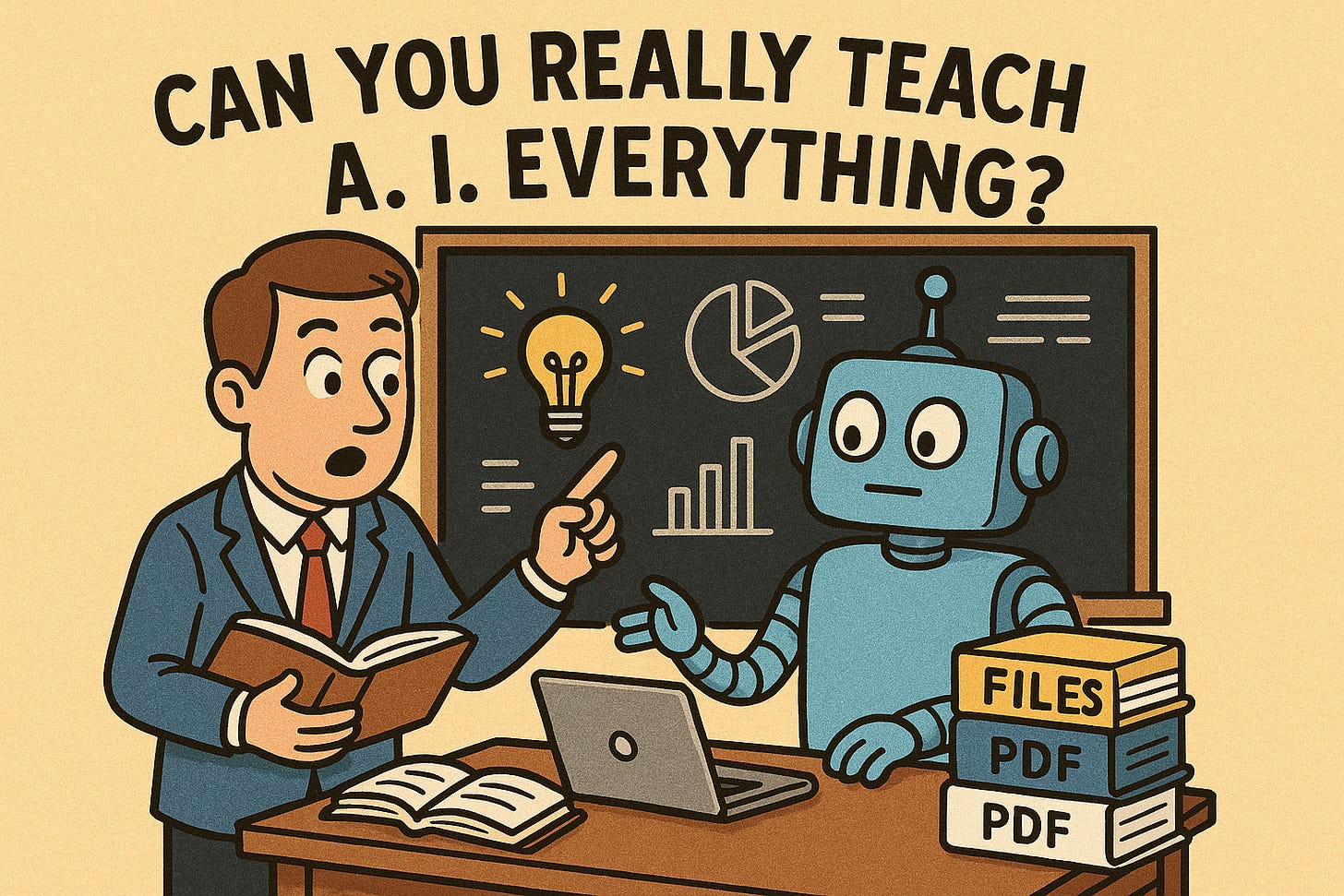Can You Really Teach an A.I. Everything? The Rising Stakes of Adding Knowledge to Prompts
Adding context to prompts is easy. Building a reliable retrieval system is not. The question is: how far should you go?
From Attachments to Intelligence
At the most basic level, enriching a prompt is a copy-and-paste job. You can drop in text, attach a PDF or paste structured data directly into a chat window. For personal use or quick research, this is sufficient. The system processes your words, calculates probabilities and generates an answer. But here lies the catch: the longer the prompt, the fuzzier the model’s grasp becomes. In a probabilistic engine, more context doesn’t always mean more accuracy.
This fragility is why businesses are moving towards retrieval-augmented generation (RAG), a method of connecting A.I. systems to dynamic sources of truth, such as databases, APIs, or file stores.
The Operator’s Toolkit
For individuals, the leap from attaching files to building a personal RAG system is small but significant. Tools like custom GPTs or Google’s Gems already offer “bring your own documents” functionality. An operator can upload a library of PDFs, create embeddings (vectorised representations of text), and let the model search those files before answering.
This transforms the chatbot into a personal analyst, capable of querying thousands of pages in seconds. But the reliability still hinges on prompt design, chunking strategies and how embeddings are maintained. An enthusiastic individual can build this, but only if expectations are realistic: RAG at this level is best for research, not decision-making.
In a probabilistic engine, more context doesn’t always mean more accuracy
The Startup Play
A small team has the means to turn RAG into a product. They can move beyond static uploads and build pipelines that ingest live data, such as news feeds, CRM entries, and financial filings. By layering in vector databases (Pinecone, Weaviate, FAISS) and orchestration frameworks (LangChain, LlamaIndex), a startup can produce systems that feel like specialised experts.
Here, the risks multiply. Without careful governance, hallucinations remain. More dangerously, the system’s “probabilistic fog” can obscure whether an answer is based on fact versus inference. For early-stage ventures, the competitive edge lies in managing this balance—fast, flexible RAG without promising certainty that cannot be delivered.
Corporate Architectures
At the corporate level, RAG turns into an enterprise architecture question. Data governance, regulatory compliance and intellectual property security reshape the discussion. Large organisations don’t just need retrieval—they need retrieval hierarchies: multiple RAG layers serving different business units, each with its own trust boundaries.
Think of it as an ecosystem of “domain RAGs” connected to a central knowledge hub. Marketing pulls campaign performance data. Finance pulls regulatory filings. Legal pulls contract libraries. Each retrieval path is controlled, audited and tested for reliability. At this scale, the real challenge is not ingestion, but orchestration—deciding which knowledge to trust, when, and at what risk.
The Strategic Stakes
The promise of RAG is precision. The risk is overconfidence. In a probabilistic environment, no architecture eliminates uncertainty. Every retrieval system is making bets: that the embeddings capture meaning correctly, that the query finds the right context, that the model integrates fact with inference without distortion.
For individuals, the cost of failure is small. For startups, it is reputational. For corporations, it is systemic. Mis-retrieval in regulated industries, such as finance, healthcare, and defence, can result in regulatory penalties or market backlash. The architecture is not just technical, but political: who controls the knowledge pipelines, and who decides when the answers are “good enough”?
The promise of RAG is precision. The risk is overconfidence. In a probabilistic environment, no architecture eliminates uncertainty
From a single user pasting a PDF, to a startup threading live data, to a multinational designing knowledge architectures, RAG is scaling ambition. But the higher the stakes, the sharper the question: are we building clarity, or are we building noise at scale?


